Previously I shared part of my year-end Singapore jaunt as I checked out Ikea’s Sladda commuter bike. Today we’re moving from Queenstown to Bedok as I take the bus across the island to visit the local branch of the French sporting goods mega-store, Decathlon.
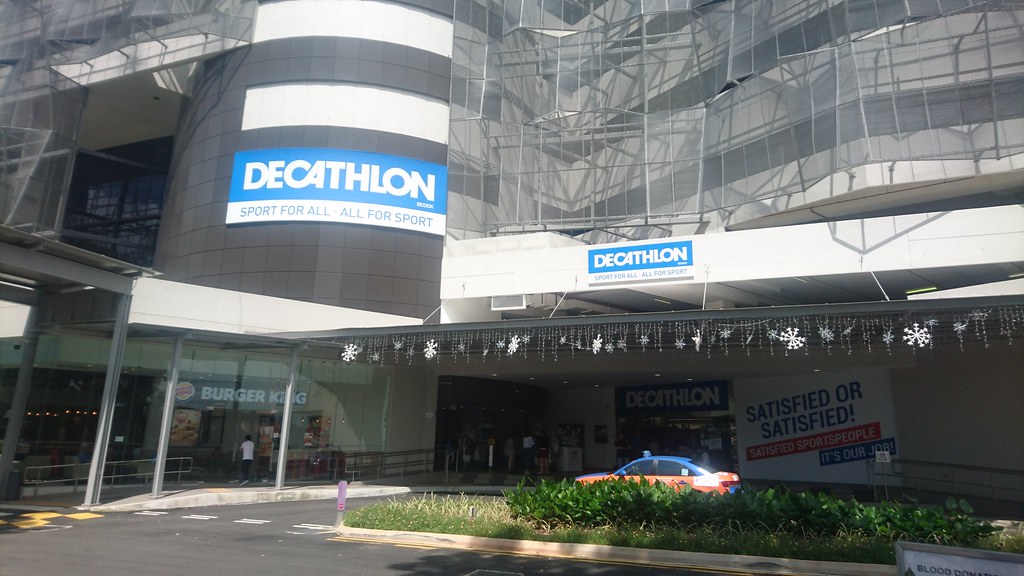
Getting off at a bus stop in Bedok along Upper Changi Road, you can simply turn around to see the store’s large building complex. What’s interesting about Decathlon is that all of its wares are made up of its own house brands. You know how household goods branded “Bonus” are sold cheaply at SM grocery stores? That’s because Bonus is SM’s house brand. It’s a similar deal here.
Decathlon’s approach dedicates each house brand to a specific sport or product line. Their Quechua brand, for example, is for hiking and backpacks, while their Orao label adorns most of their eyewear.
The house brand we’re interested in is B’Twin.
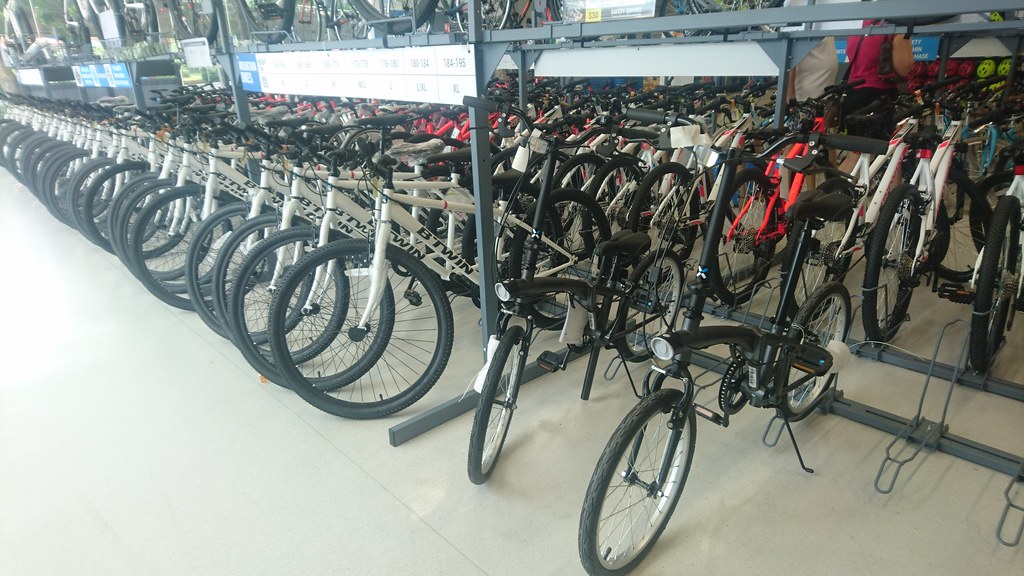
I don’t know how many of you read any foreign cycling websites, particularly those in Europe and the UK, but B’Twin’s stuff is almost ridiculously well reviewed in the past couple of years. Their Triban road bikes are frequently recommended for newcomers to road cycling because of a good build kit of components and great workmanship on frames…while simultaneously coming in below the magic and highly competitive £1000 (~PhP61,000) mark of the UK’s “Cycle To Work” (C2W) bicycle subsidy scheme.
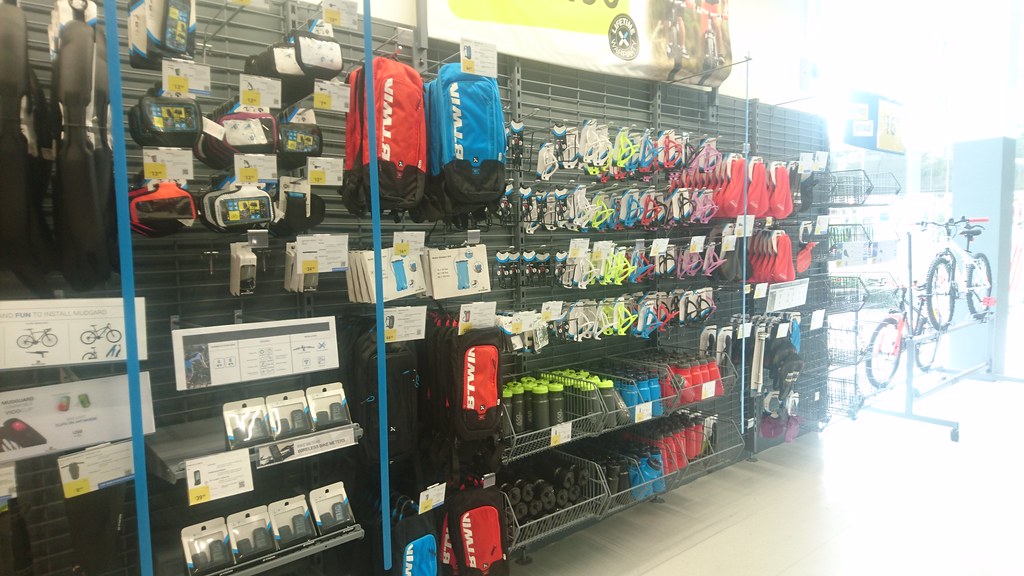
From what I understand of C2W, you can either blow the whole £1000 subsidy on a bike, or spend slightly less on the bike (for example, £800 or PhP49,000), and use the remainder on cycling-related apparel and accessories such as a helmet, repair spares, and lights – all of which B’Twin also offers.

B’Twin offers mountain bikes, but I’ll be taking a long hard look at their road bike line. This is one such model, the Triban 520 – perhaps the bike responsible for so much of the brand’s positive press. Its foundation is of 6061 aluminum and a carbon-bladed fork with an aluminum alloy steerer, but interestingly has clearance for 32 mm tires and mounting hardpoints for full-length fenders and a rear rack.
The 520 build kit then bolts on Shimano’s 9-speed Sora 3500 groupset parts and a triple crank, with the exception of B’Twin’s own-brand brake calipers. Word on the street is that the calipers are the weak link in the package, but realistically speaking, they’re a cheap upgrade.
So how much does this sell for? S$700 – PhP24,000 in old money. If you’re fine with rim brakes, that’s a great value. Most other bikes in this price range are equipped with Shimano’s Claris 2400 8-speed drivetrain. The real draw for me however is just how adaptable the frame is…and there are even cheaper models in the Triban lineup.

If you’re not a brand snob and are willing to save even more, you could go for a Triban 500. You get the same frame, but the build kit now consists of Taiwanese firm MicroShift’s 3×8 R8 drivetrain. These guys have been knocking out drivetrain components for a very long time, many of them Shimano-compatible, yet do not enjoy a large brand presence and reportedly work quite well regardless.
Because not much is known about MicroShift, it’s worth taking a closer look – at least at their control levers.
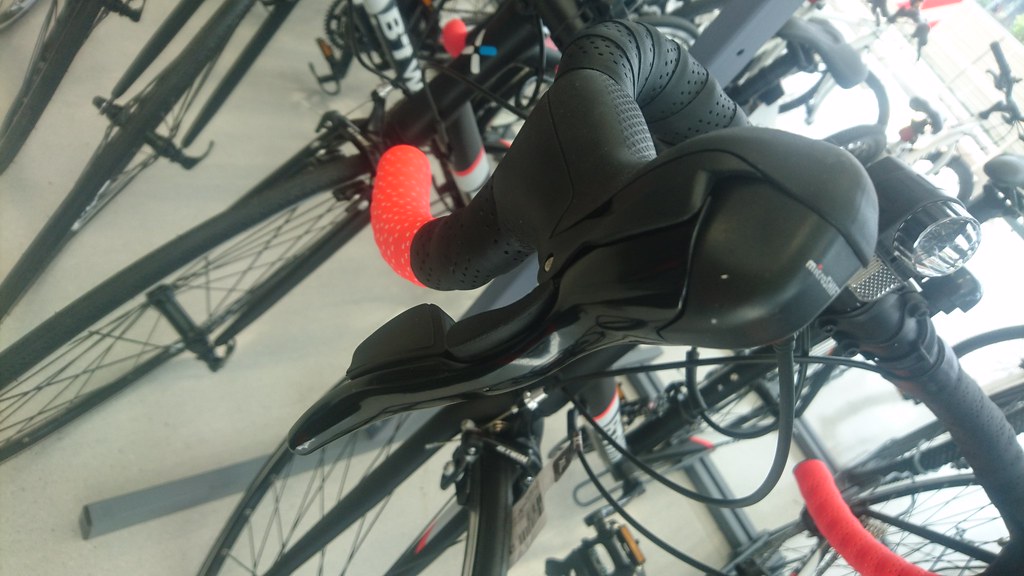
From the outset, MicroShift’s R8 contol levers look similar to Shimano’s STI levers. The main difference is that they adopt Campagnolo’s philosophy of “one lever, one function” in their own way.
Unlike STI levers, here the brake lever doesn’t act as a shift lever – all it does is pull brake cable when squeezed. Behind the brake lever are two shift levers stacked one on top of the other. The lower lever downshifts to an easier or larger cog; the upper lever upshifts to a smaller, harder cog. MicroShift’s control scheme will probably take a bit of getting used to, especially for upshifting.
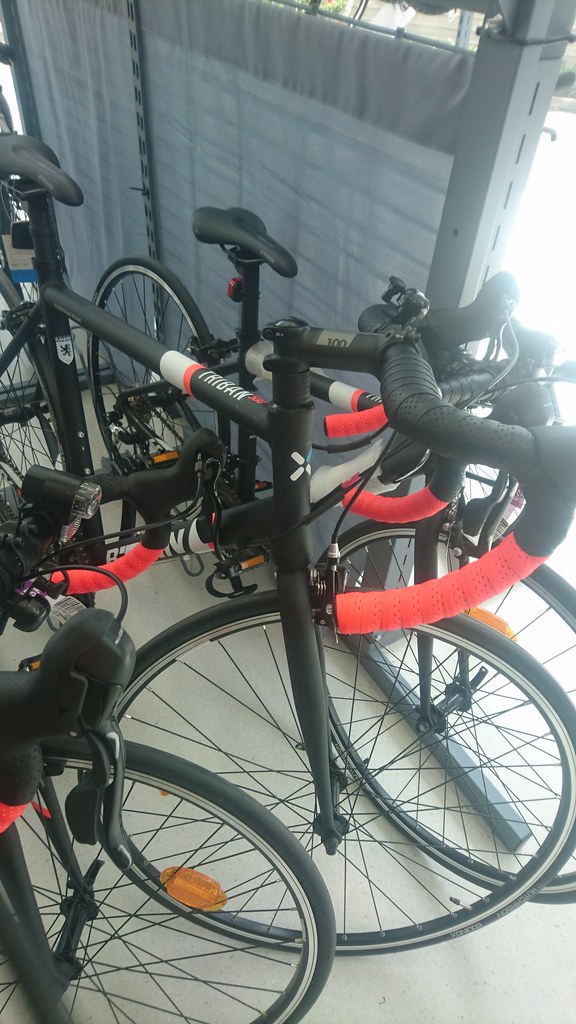
Just as impressive is how many frame sizes the Triban caters to. The bike on the right is a size XXS; the one overlapping it is a size L. Apparently the smaller sizes come with smaller 650C wheels. There are even flat-handlebar versions.
Over to the apparel section…

B’Twin divides its road cycling apparel into three lines. The 300 series is for occasional riders who ride for up to an hour at a time, maximum. Regular riders will appreciate 500 series stuff, built to provide comfort for three or four hours. Seasoned cyclists are catered to by 700 series garments.
Their 500-series waist shorts are a pretty good value at S$28 (~PhP960). This isn’t the best bit, however.
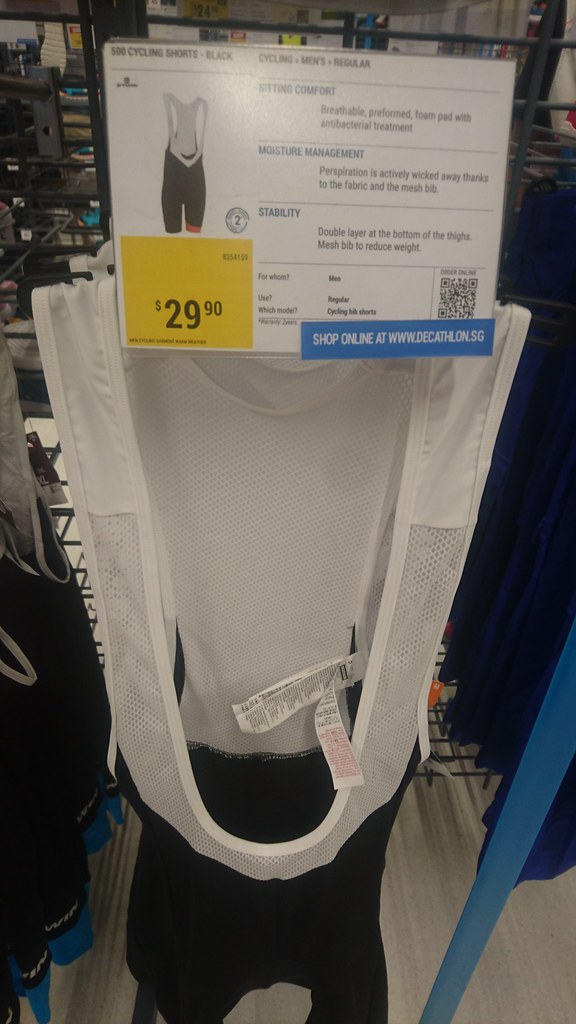
Just a couple Singapore dollars more gets you the equivalent bib shorts. I was always put off by bib shorts because of their prohibitive pricing, but at S$30 (PhP1030), these are a fraction of the price of name-brand stuff. Difficulty of nature breaks aside, at this level of difference over their waist-banded brothers, you might as well buy these as your first proper pair of bibs.
How good are they? Is this a case of “you get what you pay for”? That remains to be seen.
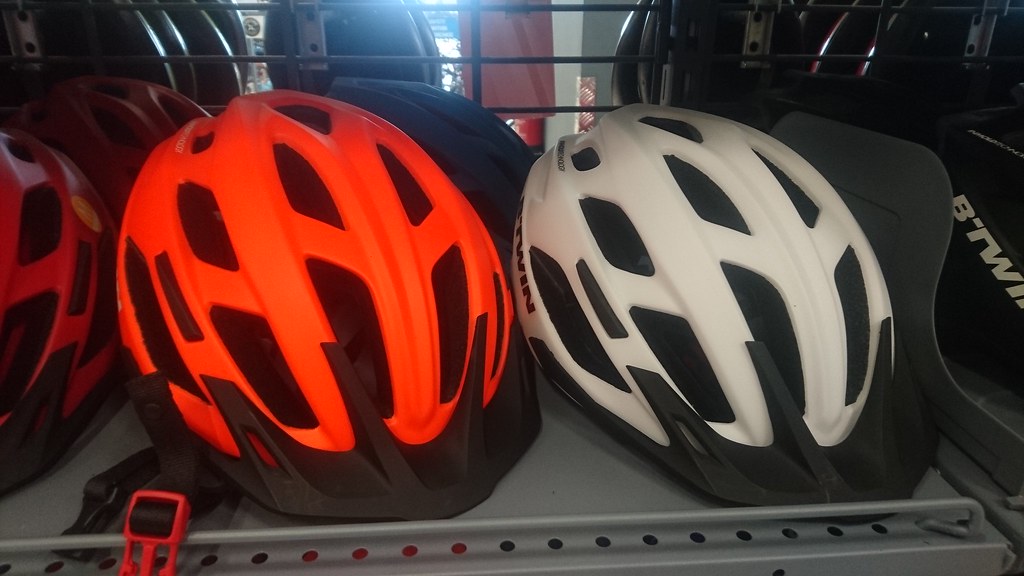
B’Twin even offers their own helmets. This is the midrange 500 series model, sold with a removable visor to cater both for mountain bikers and road cyclists. That orange is rather fetching.
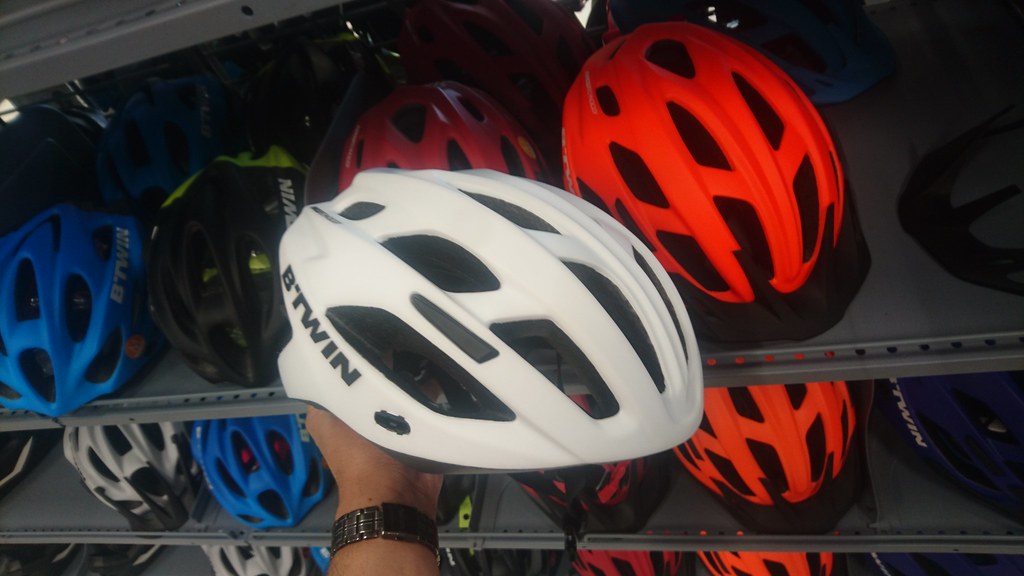
Two snaps secure each end of the visor onto the helmet shell. Not as discreet as they could be, but at least they make for a solid foundation for the visor.
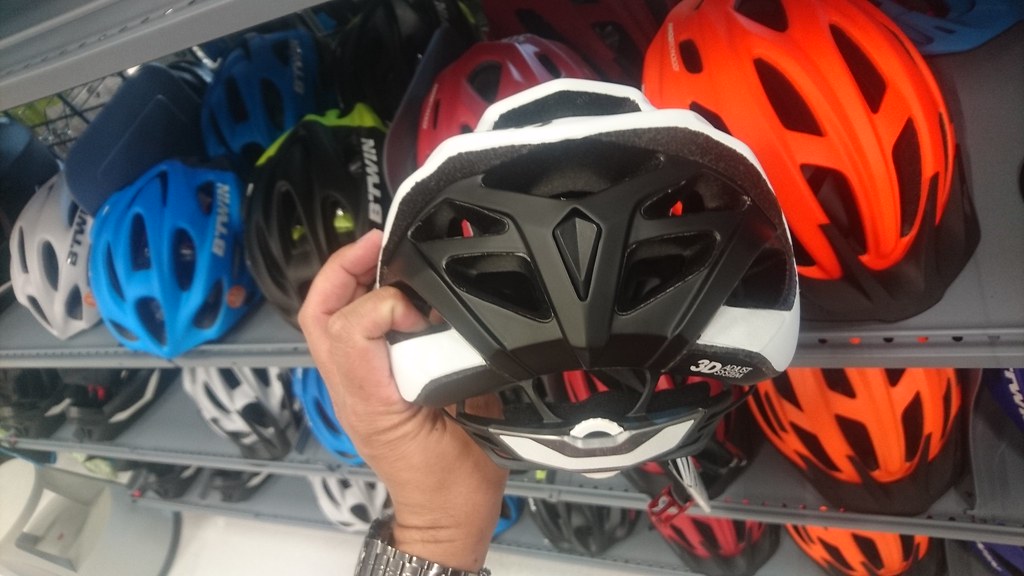
Decathlon advertises them as having a total of 21 vents, with about seven of them at the back to extract hot air from your head. A ratcheted knob engages the retention mechanism for better head fit, and it has reflective stickers on it too.

I wasn’t able to take photos of the inside of the helmet, but there’s not much air channeling molded into the foam, and there’s no MIPS liner either. Still, 286 grams in a Medium size is respectable, and it’s a good deal at S$56 (PhP1900).
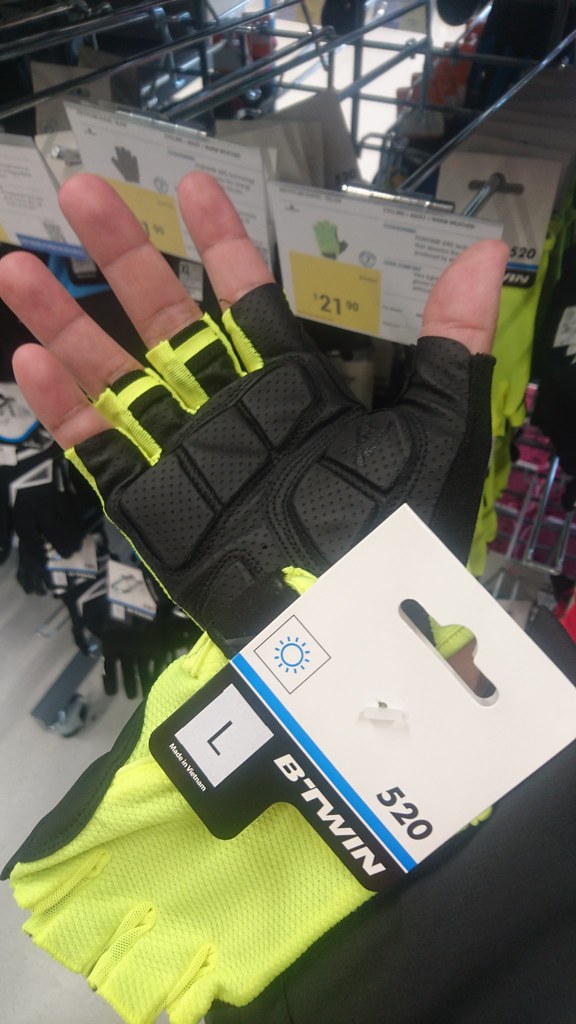
I skipped on their jerseys, as they had no full-zipper varieties, but I took a good look at their gloves. These fluoro yellow jobs are from the 520 line and cost S$22 (PhP760), which is par for the course with branded stuff. When I tried them out, I found the padding is quite generous but cut in a pattern accounting for palm flexion well. The back side is very stretchy, and the wide Velcro closure strap holds on rather well. The 700-series gloves eschew any Velcro and are held on purely by the material’s elasticity, but are quite a bit more expensive.
Finally we look at something for our baggy-shorted cousins: B’Twin’s baggies.
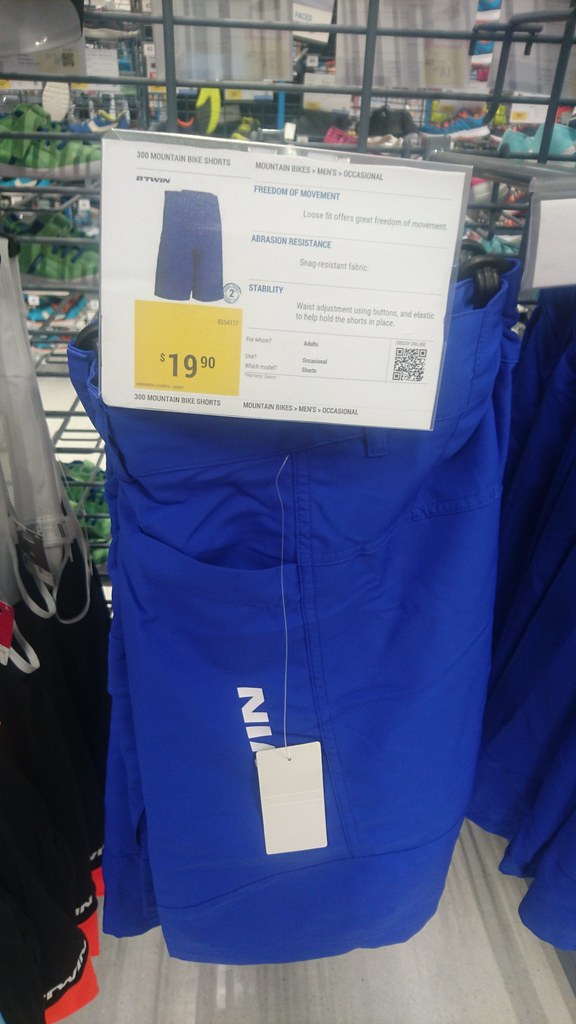
Only the 300-series MTB shorts were in stock, in blue and black. The waistband has a couple buttons on the inner edge that look like they should mate with B’Twin’s own liner shorts. The material feels hard-wearing, and it’s sized rather generously – a size XL is loose around my waist. There are belt loops, two side pockets and an external cargo pocket on the right leg.
And just check out that price – at S$20 (PhP680) it’s a steal.

The best part about this story is that as of this writing, I’ve seen a Decathlon branch being constructed inside Festival Mall in Alabang while dining out. How well the French super-store’s value proposition translates into the Philippine setting is something we will only have to wait and see.
